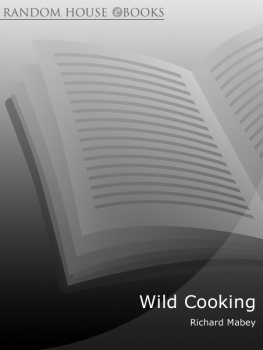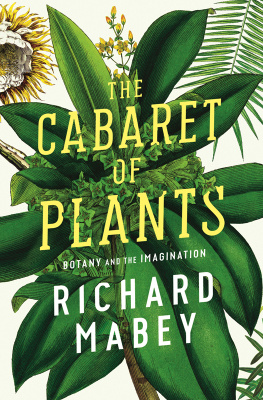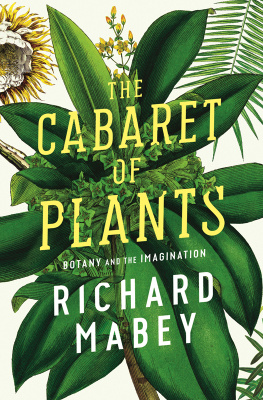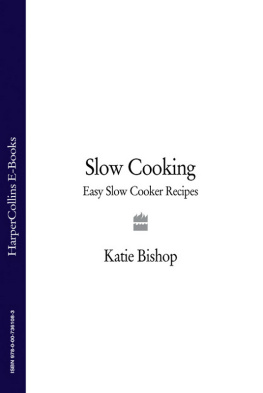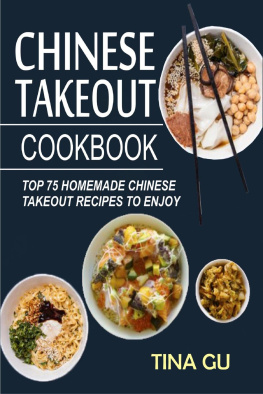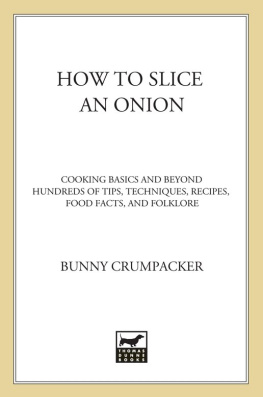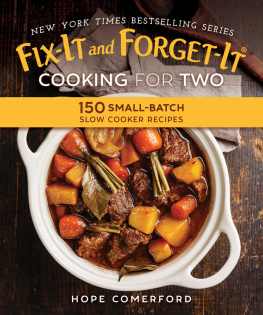About the Book
Richard Mabeys sparky, offbeat book is about canny and inventive making-do, or busking in the kitchen. Whether creating a cassoulet which uses English ingredients, making bread from chestnuts or slow-cooking a Peking duck in front of an ancient fan heater, he encourages us to be daring and imaginative in our cooking and our approach to food.
Although it contains wonderful, mouth-watering recipes like broad bean hummus, pumpkin soup and fillet-steak hearts this is more than a recipe book it is a guide to a whole new way of thinking that embraces scrumping, celebrates picnics, and revels in saving energy wherever it can, whether thats by one-pot feasts or cooling on car radiators. After all, if you care about food lifes too short not to stuff a mushroom.
About the Author
Thirty years ago, Richard Mabey educated and broadened the nations palate with his bestselling guide to edible wild plants, Food for Free. Now, in Wild Cooking, he describes how foraging can be for cooking styles as well as succulent wildings.
As the Observer critic writes, Richard Mabey conveys both delight and wisdom. Highly praised for his poetic prose style and his challenging ideas, he is a prize-winning writer, conservationist and botanist, whose books include Whistling in the Dark, The Common Ground, Flora Britannica, Nature Cure and most recently Beechcombings. Brought up in the Chilterns, Richard Mabey now lives in Norfolk with his partner, Polly Munro.
Create your own slice of the good life by getting creative in the kitchen Who said the simplest things cant be the finest?
Sunday Times
Takes us back 30 years to when cooking was fun. Here is a man who reads, walks about with his eyes open, travels, and has the knack of enjoyment it is an adventure
Guardian
A real pleasure to read he describes the making of food with such purity and simplicity that the reader feels close to the action
William Leith
Its charming. Who can resist chapters on Scrumping, Gleaning and Vegetable Road Kill, or The Pigs Squeal?
Evening Standard
It sparkles with shared insights polished by decades of dedicated interest in ingredients, free ones ideally. Its the sort of book every member of the Guild should aspire to write, because its a proper food book Mabey is quirky, creative, celebratory
Journal of the Guild of Food Writers
In memory of our mums Edna Mabey and Frances Lavender, kitchen conjurors and gentle teachers
The butterpat and the bicycle wheel
IT WAS MY first serious food experiment, churning butter on the wheel of an upturned bicycle. I was eight or nine years old, and playing savages with our neighbourhood gang in the abandoned landscape park behind our 1930s houses. Its one of those rare moments I can replay exactly. A summers afternoon, a group of half a dozen of us camped out on a little plateau among the birch and hawthorn scrub. Potatoes baking in the ashes of a wood fire. My dads old Hercules bike, upside down on the grass below the laurel-draped den wed built in the trees. All the trappings of the wild life. Its a good story, which Ive told, unchallenged, too many times, and Im surprised no one has blown my cover. Churning a pot on a bicycle wheel, after all, with a maze of brakes and cables in the way, isnt as easy as pat-a-cake.
Id searched out a jar in Mums kitchen (a pot which may, I fear, have once contained Sandwich Spread) small enough to wedge between the spokes of the back wheel, and have unimpeded progress past the wheel-forks. I filled it with top-of-the-milk, screwed the cap on tight, and began to crank the pedals by hand. We took turns, and at the end of two hours hard graft we had a minute gobbet of unsalted butter a transformation from milk to gold that seemed as miraculous to us as if wed used the Philosophers Stone, not an old bike.
But why I should have wanted to produce something as difficult and cissified, as civilised, as butter and Im pretty sure it was my idea when I should, by schoolboy lore, have been baking gudgeons in clay or experimentally chewing worms, I havent a clue. Except that half a century on, Im doing exactly the same kind of thing, trying to make a passable imitation of Corsican curd cheese with the help of a couple of lemons and a pair of old tights.
Ive always found making-do irresistible: improvising food out of unlikely ingredients, stretching a little a long way, trying to be a clever-dick by making real chefs tricks accessible in an ordinary kitchen. Its a kind of culinary busking, I suppose, barefoot cookery. But Id defend it as an approach, because its the natural style of most cooks on the planet. Not of the highly trained professionals who produce restaurant food to exquisitely honed recipes, but of the family with a glut of cooking apples to get through; the Moroccan street-cook with just a few spices and a brazier to play with; the forager, the scavenger, the hard-up house-husband or wife who needs to be a wizard with leftovers All of them have developed the knack of opportunism, of seizing the moment, the whim, the ingredient in season, of carpe diem cooking.
This book is a homage to that tradition. Its a modest record of some of the ideas that my partner Polly and I have explored in our kitchen and garden in Norfolk. In no way is it a conventional cookbook. It isnt organised according to different courses or kinds of food. It makes no pretence at being comprehensive or even balanced in what it covers. There is nothing on breakfasts or roast joints or cakes. Potatoes are barely mentioned, and fish not at all ( for why). Much of it is idiosyncratic, a collection of recipes which weve worked out ourselves, or simply love cooking, and which fit into what might be called the house style.

This, I hope, is what holds the book together. Its not so much an orthodox recipe book as a guide to a particular approach to food, in a world where what to eat and how to cook it have become political, even moral issues. Its loosely seasonal chapters are based on a series of reflections about food-use, about seasonality, how to cope with gluts, diversity of crops, gleaning and scrumping, energy-saving cookery. The problem of waste and how to avoid it runs throughout the text, as it does through the whole food supply chain, from the kitchen, where 30 per cent of purchased food goes into the bin, back to the growing fields themselves, where mechanical harvesters squander huge quantities.
As I write the world is entering not for the first time a cereal shortage, as yields in drought-stricken grain belts begin to fall, and diets in Asia become westernised and switch from pulses to grain-raised beef. In the panic to redress these shortages there is the ominous prospect of a return to the scorched-earth, intensive agricultural practices of the 60s and 70s, with all the long-term ecological devastation they wreaked. I have a look at this arable addiction, and ask whether there might be more benign ways of providing staple carbohydrates.

